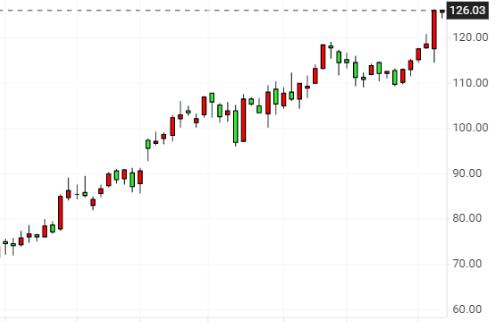Why is it said that a decline in Starbucks is a good buying opportunity?

On social media, under a piece of information about Starbucks' (NASDAQ:SBUX) stock price drop overnight, netizens commented: "This is another buying opportunity."
Although Starbucks reported better-than-expected earnings after the US stock market on Tuesday, the stock price of this stock still fell. According to the market data of Investing.com, the stock price fell 2.86 in the after-hours trading hours on Tuesday. %. However, since the beginning of this year, the stock has risen by 17.81%, and has risen by 12.26% in the most recent month.
According to financial report data, Starbucks' third-quarter revenue increased by 78% year-on-year to US$7.5 billion, exceeding market expectations of US$7.29 billion; adjusted earnings per share (EPS) was US$1.01 and market expectations were 78 cents.
Starbucks' sales data soared this time, mainly due to the hot sales of cold drinks in the summer. The financial report shows that three-quarters of Starbucks’ beverage sales come from cold beverages such as cold brew coffee, such as Nitro cold brew.
Starbucks has always been a topic that Wall Street investors are tirelessly discussing. In this article, let's take a look at why the decline of Starbucks can be regarded as a good buying opportunity.
Too big to fail: will a shortage of coffee beans help Starbucks stand out?
In the post-epidemic era, Starbucks' scale, resources and brand are still the biggest advantages.
Last week, an unexpected frost hit Brazil's coffee crops, causing coffee futures prices to soar. As of July 20, the price of Arabica coffee beans has increased by 6%, and the price of Robusta coffee beans has increased by 2.4%. Arabica coffee is more affected because it grows at higher altitudes and is more susceptible to frost. So far, Starbucks has been using Arabica coffee beans to make coffee beverages.
At the same time, in the post-epidemic era, raw materials are still facing problems such as deterioration in transportation conditions and tight supply chains. Prior to this, Taco Bell's management also pointed out that the nationwide transportation delays have occurred in the United States, and the entire catering industry is facing challenges. "Our supply interruption is due to a shortage of warehouse personnel and drivers."
For various reasons, the products on the Starbucks menu were in short supply before. However, fortunately, the company's management said at the earnings meeting on Tuesday that Starbucks has locked in the price of coffee beans for the next 14 months to avoid the impact of falling temperatures in Brazil leading to price increases. However, the company still expects inflation in other areas such as transportation and labor to rise in the next quarter and fiscal year 2022.
However, in general, giants like Starbucks can better survive the crisis. According to earlier data from Euromonitor, 7.3% of coffee retail stores in the United States will close down by the end of this year. "The winner is the last laugh", this is Starbucks.
The membership plan worked, half of the sales came from Star Rewards users
It is also worth noting that Starbucks’ brand loyalty is still very high, with half of its sales coming from its loyalty program members.
By actively expanding its digital ecosystem on major platforms, Starbucks has seen a 48% increase in the number of 90-day active members of Starbucks Rewards cards in the United States. In China, the 90-day active users of Starbucks Club reached another 17 million, an increase of 4% from the previous quarter and a year-on-year increase of 71%. By increasing the participation of members, the consumption frequency of gold card members has returned to the level before the epidemic.
Poor performance in the international market and weak business development in the Chinese market?
Outside the United States, Starbucks’ same-store sales increased by 41% and customer traffic increased by 55%. Starbucks executives said, “Many countries where our business is located are relatively backward in terms of vaccination and population mobility, so revenue in these markets has recovered.” For example, the new crown epidemic has made a comeback in Japan, which is hosting the Olympics.
Starbucks adjusted its forecast for the growth of international same-store sales this year. The company's current expected growth rate is 15-17%, compared with previous expectations of 25-30%.
What needs attention is that Starbucks reminded the company's business in its second largest market-the Chinese market will slow down. At present, the number of Starbucks stores worldwide has reached a record 33,295, including 5,135 in China and 15,348 in the United States, accounting for 62% of the total number of stores.
In the third fiscal quarter of 2021, same-store sales in China increased by 19%, compared with a 19% decline in the same period last year. Starbucks had previously predicted that same-store sales in China would increase by 27% to 32%. But now, the sales will only grow by 18% to 20%. Based on this data, Starbucks lowered its full-year forecast for same-store sales growth in China. Starbucks expects China's same-store sales in the fourth quarter to be flat.
However, Starbucks China CEO Belinda Wong emphasized, “The fluctuations in the Chinese market are temporary, and the company expects a non-linear recovery.”



